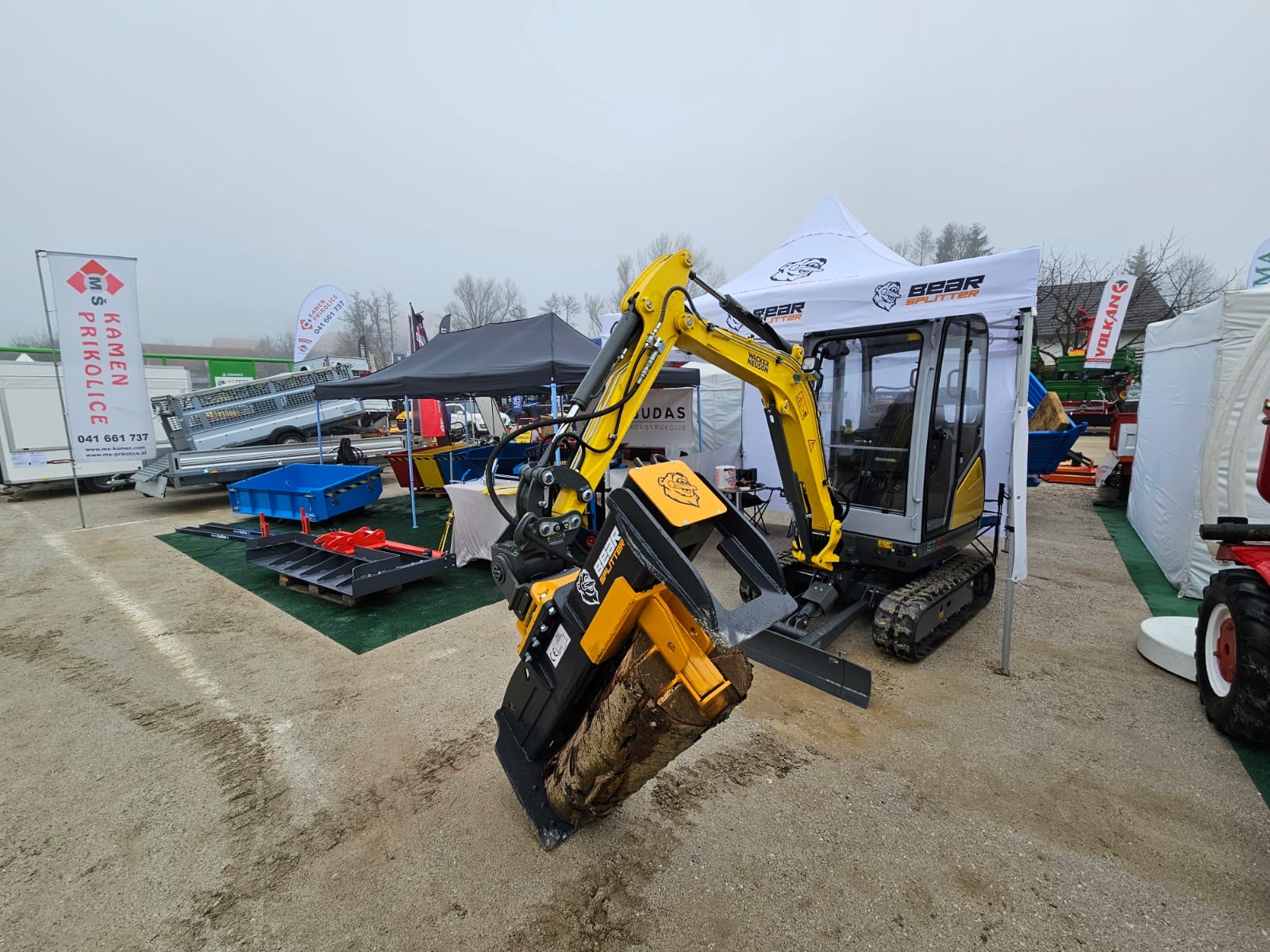From manual labor to “smart” vaccination
Firewood grafting has moved in recent decades from axes and wedges to hydraulic machines that shorten time, reduce risks, and produce more even logs. Today we have available wood splitter various designs (vertical, horizontal, combined, PTO), as well as specialized solutions such as hydraulic splitter for excavator - such as Bear Splitter. For the basics of types, power and drives jump to guide (types, power, drives).
.jpg)
Stage 1 - Axe, Wedge and Clean Technique
Advantages
- Lowest cost of entry, excluding electricity/fuel.
- A good solution for very small quantities or softer wood.
Weaknesses
- Slow, physically strenuous, increased risk of injury.
- Uneven cuts and demanding on knotty cuts.
Why is this no longer the standard? Because there are machines available that drastically reduce time and physical effort, while raising safety to a higher level. Basic safety habits (goggles, gloves, flat workplace) remain the same even when we switch to machines - check 5 safety rules.
Stage 2 - Classic hydraulic wood splitters
Electric, petrol and PTO (tractor)
- Electric (230/400 V): quiet, clean, low maintenance; typically up to ~7 t (230 V) and ~10—12 t (400 V), respectively.
- Petrol: mobility and more power in the field, in exchange for noise and engine service.
- PTO (tractor): maximum tonnage for farms/professional use.
When are they ideal?
- Yard/house use, regular grafting of medium diameters.
- When you want repeatability, safety (two-handed operation) and a faster pace than manual work.
If you are interested in the very process “from log to log”, read What is firewood grafting? (steps, drying, typical errors).
Stage 3 - Cutting-splitting machines (batch preparation)
T.i. slitting and splitting machine combine sawing (per dimension) and grafting. The advantages are in serial work: less rearrangement, consistency, faster workflow. In practice, many people combine it with moving the cleavage to the field (e.g. with an excavator) to shorten the logistics of the logs. Review the basics of drives and power to understand when such a combination pays off.
Stage 4 - Hydraulic splitter for excavator (BearSplitter)
Excavator cleaver BearSplitter is designed for grafting directly from the working machine. The operator stays in the cab, gets the stability and force of the excavator, and masters very large diameter and knotty wood. Key points: speed ~7 cm/s, approximately 13 s for a 1-meter log, Ø 100-1500 mm, 354 kg, min. excavator ~2 t (≈30 HP). This means less transport, faster post-catch processing and lower cost per m³ for larger volumes. Read the article Smart way to split firewood - BearSplitter.
Universal Clamps
Clamps are available Lehnhoff 40/50/60/70 mm, Martin, Morin retromatic and rotator. One head = several excavators without rework.

How to choose the right stage of “evolution” for yourself?
- A little firewood, softer wood: Stick to the classic electric Wood splitter( 5-7 t) or occasionally manually.
- Medium quantities, mixed diameters: vertical/horizontal wood splitter (7-12 t) in terms of space and ergonomics.
- Large volumes, terrain, thick/knotty logs: hydraulic splitter for excavator( BearSplitter) as a “smart” productivity acceleration.
- Serial line:think about Slitting and splitting machine+ logistics with excavator.
Conclusion
You can find even more useful information and guidance on our website
- 📘 Guide: types, power, drives → Wood splitter: the complete guide 2025 (tonnage, electricity/petrol/PTO/excavator).
- 🧠 Smart approach: Smart way to split firewood - BearSplitter (speed, Ø 100-1500 mm, clamps, ROI).
- 🛡️ Safety: The 5 most important safety rules (PPE, Workplace, Technique, Maintenance).
- 🌐 Homepage & Gallery: photos, specifications, contacts → bearsplitter.com.

